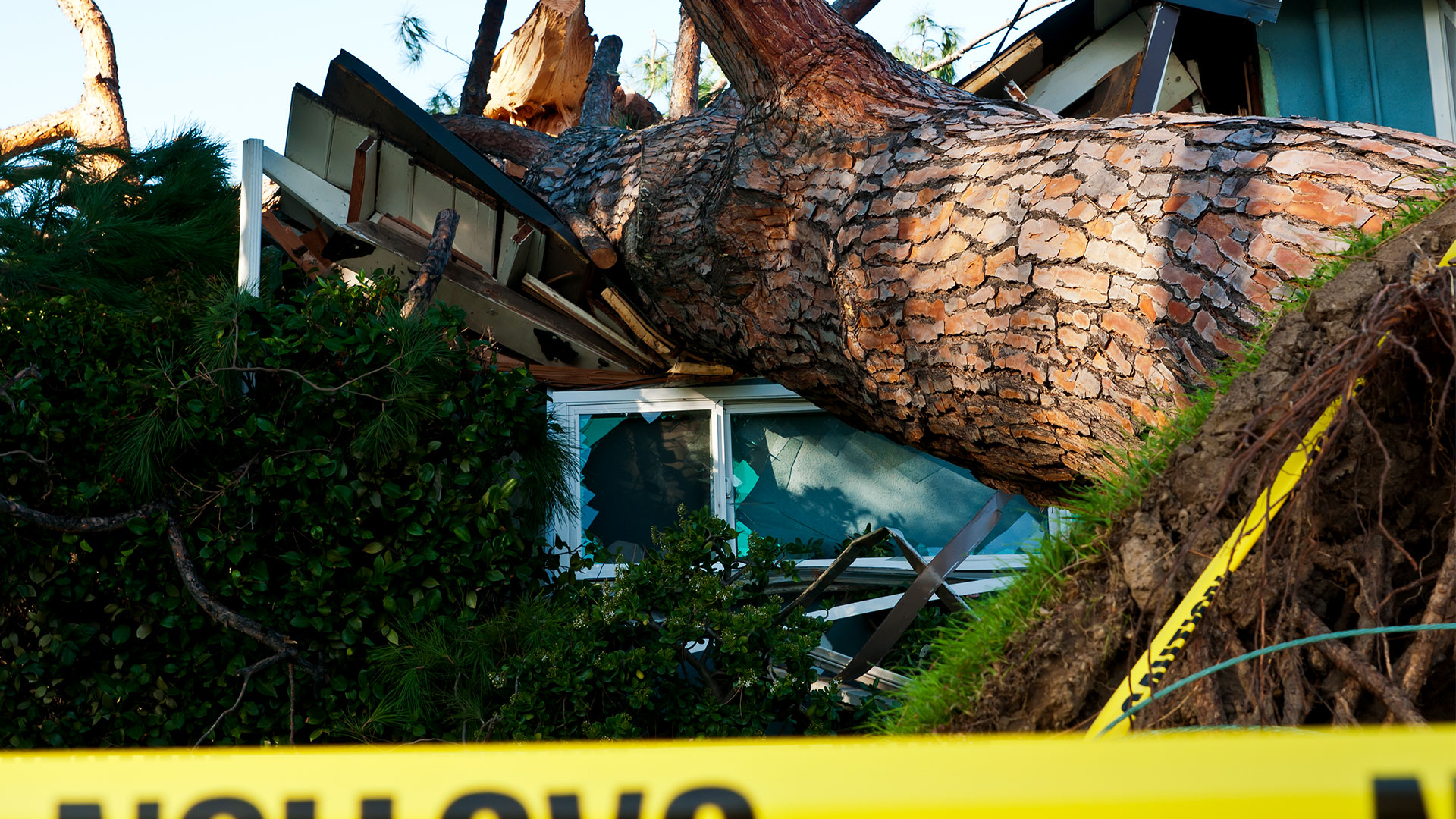
Don’t Let Storm Shelter Costs Leave Your Family Unprotected
Friday, Apr 25 2025
Oklahoma set a new state record last year: 152 tornadoes. While these storms can’t be prevented, you can protect yourself by understanding the hazards and creating an emergency plan. One essential component of your safety plan should be having a reliable place to shelter during a tornado.
When properly installed, safe rooms and shelters provide the highest level of protection from tornadoes. But what options are there for sheltering during a tornado? What will work best for your home and family? And how much does a shelter or safe room cost?
Read on for helpful information on tornado safety options from The Focus Federal Credit Union.
Why Oklahomans Need Storm Shelters
Tornadoes develop from severe thunderstorms when warm, moist, unstable air is ahead of a cold front. The violently rotating air columns can exceed 250 miles per hour. Most tornadoes are only a few yards wide and touch down briefly but are capable of causing significant destruction, including uprooting trees, overturning cars, and damaging structures in a short period.
Tornadoes pop up quickly, but usually, there are indicators of an impending storm. When conditions suggest a possible tornado, the weather service’s Storm Prediction Center will issue a tornado watch in an area. This can happen for up to 10 hours, cover several counties, and even extend into multiple states. But despite ideal weather conditions, no tornadoes are guaranteed to form.
A tornado watch is the time to implement your emergency plan:
- Stay informed through the National Weather Service, local radio, or news stations
- Charge your phone
- Go to the safe location you have identified
- Gather emergency supplies, non-perishable foods, water, and a first-aid kit
Once a tornado has formed, the tornado watch turns into a tornado warning. The average warning time is 13 minutes. If you haven’t already, that’s the time to act fast and seek shelter.
Types of Storm Shelters
Choosing the proper tornado shelter for you depends on your needs and circumstances. Knowing your options can help you make informed decisions for your safety before a tornado hits. When deciding on a shelter, you’ll want to consider accessibility, space, and the level of protection needed when selecting your shelter. Whether it’s a safe room, underground garage shelter, or reinforced space, having a secure space can save lives.
Underground Garage Shelters
Constructed from materials like steel and concrete, underground garage shelters are installed beneath the floor of your garage. Since they are underground, they save yard space and remain less visible. Your vehicle can be parked in the garage right over the shelter, saving space when there isn’t a tornado in the area. And since they are inside the garage, they offer quick and easy access without leaving your home during a storm. Using existing garage space also keeps your yard free from large structures. Since you’re underground, the environment typically stays cooler, providing comfort during long waits.
But entering an underground shelter can be challenging for people with mobility issues, especially in emergencies. And if you add the shelter to your existing home, you may pay a bit more since you’ll be tearing up concrete.
Safe Room
A safe room is a hardened structure that provides shelter during a storm. They are built with reinforced walls and ceilings of double-thick plywood or steel, adhering to established standards. Connections between parts of the safe room’s walls, ceiling, and door are built to withstand wind pressure and resist penetration by windborne debris and falling items such as trees and building parts.
While multiple potential locations exist to construct a safe room inside a house, including inside a garage or carport, a safe room can also be located outside the home, either as a detached structure or adjacent to the house. Remember, safe room access openings can’t exceed 150 feet in travel distance from the nearest residence entrance for quick access during a storm.
Regardless of location, FEMA established standards for anchoring the base to resist overturning and uplift. A safe room must be located outside areas with a high risk of flood.
One of the primary advantages of safe rooms is accessibility. Safe rooms offer quick access for older adults or those who can’t go downstairs. They offer flexibility since they can be designed directly into the existing structure. This will enable you to choose a location that best suits your needs and space constraints. Another perk is that safe rooms are movable, so if you plan to relocate, you can bring your safe room to your new home.
In-Ground Shelters
In-ground shelters are tornado structures outside of your home and underground. They are situated below the surface, allowing them to blend into your outdoor space. In-ground shelters come in various sizes and can accommodate larger groups because you often have more space outside.
These shelters are durable and are typically reinforced with steel or concrete for added security. Because they are underground, these shelters won’t sustain any exterior damage from flying debris. But they do have stairs, which can make access difficult for people with mobility issues.
Reinforced Rooms
Reinforced rooms are typically integrated into a nook within your home, such as a closet, storage room, or other space. They usually only have one entry point and no windows. The space’s dual purpose is one of the advantages of a reinforced room.
To maximise protection, these reinforced spaces are equipped with heavy-duty steel or vault-like doors, which are easily accessed in an emergency. Reinforced rooms are usually built into a new house using reinforced concrete or steel combinations. You can strengthen a room in your existing home, but it can be a significant investment involving structural modifications.
Factors Influencing Storm Shelter Costs
FEMA provides guidance and best practices for designing and constructing safe rooms and shelters. To receive FEMA approval, storm shelters must meet the design criteria outlined in FEMA P-361: Safe Rooms for Tornadoes and Hurricanes.
To be approved, the shelters must withstand wind speeds up to 250 mph and endure the power of a projectile at 100 mph. The structure must have adequate ventilation, access to an egress point, and meet electrical requirements.
Beyond the required standard, storm shelter costs are affected by:
- Size. The size of the shelter is one of the most significant factors in determining cost. Larger safe rooms and shelters cost you more to build. FEMA recommends a minimum of five square feet per person, but you may opt for a little more elbow room.
- Materials. Storm shelters can be constructed using steel, concrete, and fiberglass. The type of material affects the shelter’s durability and cost.
- Location. Your geographical location will affect installation costs. Factors like your home’s water table level, soil type, and the presence of rock can complicate the installation and add cost.
- Customization. Because of standardization, prefab or precast storm shelters cost less. But these offer fewer options than custom-built alternatives. Upgrades and add-ons are available for storm shelters, which can increase their cost. You’ll want to compare shelter features and prioritize what matters most.
- Labor. The labor to install a storm shelter ranges, depending on the size and installation difficulty. When choosing a company, look for a National Storm Shelter Association (NSSA) or American Tornado Shelter Association (ATSA) member.
The Focus Federal Credit Union Can Help Provide Safety in a Storm
Protecting yourself and your loved ones during an emergency requires preparation. In the chaos of a storm, having a reliable, safe space — under your garage, in your yard, or in a safe room — can provide peace of mind. But storm shelter costs aren’t cheap. Contact FFCU today. We can help you learn about financing your storm shelter through one of our loan options.

